Opioid Addiction Treatment in Massachusetts
Opioid Addiction: Signs, Symptoms & Treatment
If you are looking for an opioid rehab center in Massachusetts, Freedom Health can help. Through our evidence-based, holistic therapies we offer you a personalized experience in opioid addiction recovery.
Understanding opioid addiction
What are Opioids?
Opioids are a class of drugs that act on the dopamine receptors in the brain and produce a euphoric effect often referred to as a “high.” They are also commonly used as a form of pain management and are prescribed by doctors in various forms. Opioid addiction is a common side affect of long term opioid use.
Opiates vs. Opioids
The terms opioids and opiates are commonly used interchangeably. However, “opiates” is a term that was originally coined to describe a group of substances that are naturally derived from the poppy plant, including opium, morphine, and heroin. Opioids have been used to describe substances whose chemical composition resemble opiates, but are synthetically made. Today, “opioids” is an overarching term used to describe all of the substances in this group, regardless of whether they were naturally occurring or synthetically-made.
Types of Opioids
- Codeine
- Fentanyl
- Heroin
- Hydrocodone
- Oxycodone
- Methadone
- Morphine
- OxyContin
- Suboxone
- Tramadol
Conditions We Treat at Freedom Health
We offer comprehensive care for a range of mental health and substance use disorders, understanding that each individual’s journey is unique. Some of the conditions we treat include:
What to Expect at Freedom Health's Addiction Treatment Program
Signs of an Opioid Addiction
Early detection can make a great difference when it comes to opioid abuse and addiction. This means knowing what the signs of addiction are. By being able to identify and address addiction early, not only will the withdrawal symptoms be less severe, but an individual could also be saved from a number of social, legal, financial, and physical consequences. Signs of opioid addiction include:
- Doctor shopping
- Use of multiple pharmacies across town
- Using more than the dose prescribed
- Trying to stop using opioids but not being able to
- Experiencing withdrawal symptoms when ceasing opioid use
- Using illicit opioids
- Crushing, snorting, or injecting opioids
- A lack of interest in activities they previously enjoyed
- Hanging around new groups of people
- Keeping secrets from loved ones
- Irritability and changes in overall mood/personality
We Work with Most Major Insurance
If you or a loved one are looking for affordable addiction treatment, we accept most major health insurance plans along with other forms of payment.
Even if your insurance isn’t listed here, don’t hesitate to contact us for instant coverage verification.










How we can help you find long-term recovery
Opioid Addiction Treatment in Massachusetts
One of the major struggles of opioid addiction is the physically addictive nature of these drugs. Strong cravings are a common symptom of withdrawal and a reason why there are such high rates of relapse. This is why a higher level of care such as inpatient treatment, detox, and IOP is recommended to help individuals who are addicted to opioids. Recovery from opioid addiction doesn’t happen overnight. Expect to need a continuum of care at a trusted facility with highly trained professionals and an array of therapies starting with detox.
Opioid Detoxification Programs
The first stage of recovery for individuals addicted to opioids is detox. An individual who is physically addicted to opioids will begin to develop cravings and potentially other withdrawal symptoms in as little as 6 hours after their last opioid use. The symptoms will challenge the individual in achieving their sobriety. A detox program provides physical and emotional support from day 1 until withdrawal symptoms have subsided. Additionally, living in a secluded, sober environment during this time helps remove any temptations or outside stressors that could lead to relapse.
Medically-Assisted Opioid Detox
A medically assisted detox plan for opioid withdrawal includes a number of possible interventions that many ease withdrawal symptoms and speed up the timeline. Sweating, vomiting, and diarrhea are withdrawal symptoms that can quickly lead to dehydration, a dangerous health issue. Something as simple as an IV drip can provide much-needed hydration and electrolytes that someone in withdrawal would not otherwise have access to at home. Residential or inpatient detox patients are also provided with daily meals designed to provide nutrients, minerals, and sustenance that support the withdrawal process. Patients are also usually given supplemental vitamins.
Inpatient Opioid Rehab
Following detox, or while on Methadone or Suboxone, clients can enroll in a number of treatment options. The following treatment programs provide support during the first weeks and months of sobriety while helping develop skills and tools to prevent relapse.
Intensive Outpatient Program (IOP) for Opioid Addiction
With fewer hours of programming per week, IOP for opioid addiction is often a good transitional program after completing PHP. Also for individuals that simply require a little more time to dedicate to their work, schooling, or other responsibilities. This program is ideal to continue learning about addiction and recovery. Without the high level of structure a PHP program requires.
Outpatient Opioid Treatment
The lowest level of care offered at Freedom Health is outpatient treatment for opioid addiction. Allowing clients to continue dedicating several hours per week to their recovery journey while still being able to maintain a full schedule outside of treatment. Outpatient treatment may be a good option for those who have experienced moderate levels of opioid addiction. As well as those who are transitioning out of higher levels of care.
Dual-Diagnosis & Opioid Addiction
Those who have been struggling with opioid addiction and have also been diagnosed with a mental health disorder can benefit from our dual diagnosis treatment program. This route is designed to provide treatment for both mental health concerns concurrently. Creating the greatest opportunity for recovery. Common co-occurring mental health disorders include depression, anxiety, and bipolar disorder. Our mental health counselors are highly trained in diagnosing and treating dual diagnosis patients.
Freedom Starts With a Single Phone Call
Our caring and experienced admissions team is available 24 hours a day, 7 days a week. Regardless of your circumstances, we will make sure you get personalized treatment recommendations that work for you.
Request a Confidential Callback
check out our testimonials
Client Stories of Hope & Healing
Overcome Addiction at Our Massachusetts Opioid Rehab
If you or a loved one is struggling with opioid addiction, getting help sooner than later is going to be critical to recovery. Our admissions counselors and intervention specialists can help. Ensuring that an individual in need is able to access the right support in a timely and appropriate manner. Don’t wait for another second, make the call now!





